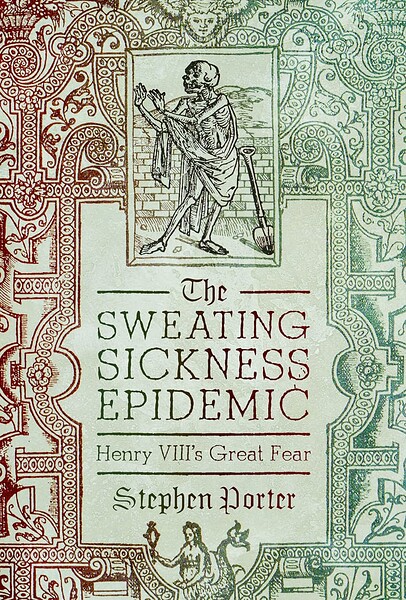Looking for a good read? Here is a recommendation. I have an unusual approach to reviewing books. I review books I feel merit a review. Each review is an opportunity to recommend a book. If I do not think a book is worth reading, I find another book to review. You do not have to agree with everything every author has written (I do not), but the fiction I review is entertaining (and often thought-provoking) and the non-fiction contain ideas worth reading.
Book Review
Sweating Out a Killer Disease
Reviewed by Mark Lardas
July 9, 2023
“The Sweating Sickness Epidemic: Henry VIII’s Great Fear,” by Stephen Porter, Pen and Sword History, 2023, 192 pages, $39.95 (Hardcover), $19.99 (ebook)
Between 1485 and 1551 a series of epidemics hit England. The disease was called the sweating sickness. Then it disappeared, never to return. Even today doctors are uncertain of what microbe that caused it.
“The Sweating Sickness Epidemic: Henry VIII’s Great Fear,” by Stephen Porter tells the story. It traces its march across England, shows its impact on English life, and follows modern scientific studies of what caused the disease and why it disappeared.
Less deadly than the Black Death, it was more feared because it appeared and killed suddenly. A man in good health at dinnertime, would suddenly start sweating, and be dead by morning. It terrified Henry VIII. He feared chaos would result if the English sweats cut him down before he had an heir old enough to take over.
It first appeared in 1485 shortly after Henry VII wrested the throne from Richard III. It might have been brought to England from the Continent by his army. (Some in England viewed it as God’s curse against the Tudor dynasty.) Thereafter it periodically reappeared. Major outbreaks occurred in 1498-1506, 1528-29, 1533 and finally in 1551. Prince Arthur died suddenly of disease in 1502. It probably was not due to the sweating sickness, but many believed, including the future Henry VIII believed it was.
The disease affected England many ways. It was an airborne disease. Evacuating a city to escape it spread the disease because humans, not rats and fleas were the vector. Oddly, it was confined to England. It never spread to the Continent. Sick English travelers brought it to Europe several times, but it always died out without spreading.
Henry VIII isolated himself and his family when the disease was rampant, refusing to admit visitors from affected areas. It led to techniques now commonly used in public health. Quarantine of households with illness and public reporting of mortality and cause of death emerged in England due to the disease.
As mysteriously as it arrived it disappeared. Even modern scholars do not know what caused it or why it disappeared. Twentieth century researchers speculate it could be an enterovirus, arbovirus or hantavirus – even anthrax. It symptoms do not entirely fit any of these, and its cause remains speculation.
“The Sweating Sickness Epidemic” is a fascinating study of the effect of disease on society. It also shows the limits of medicine, today as much as in the 16th century.
Mark Lardas, an engineer, freelance writer, historian, and model-maker, lives in League City. His website is marklardas.com.
